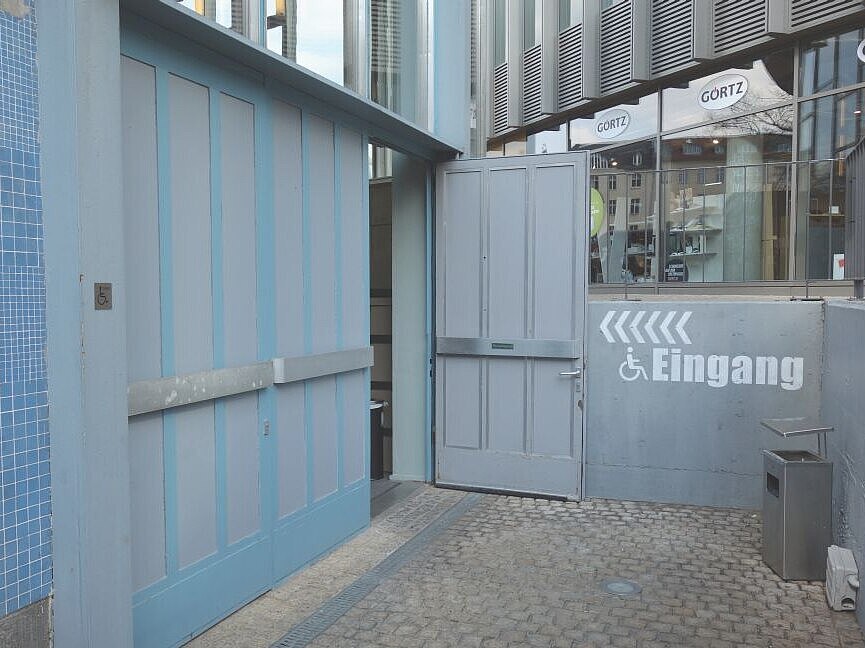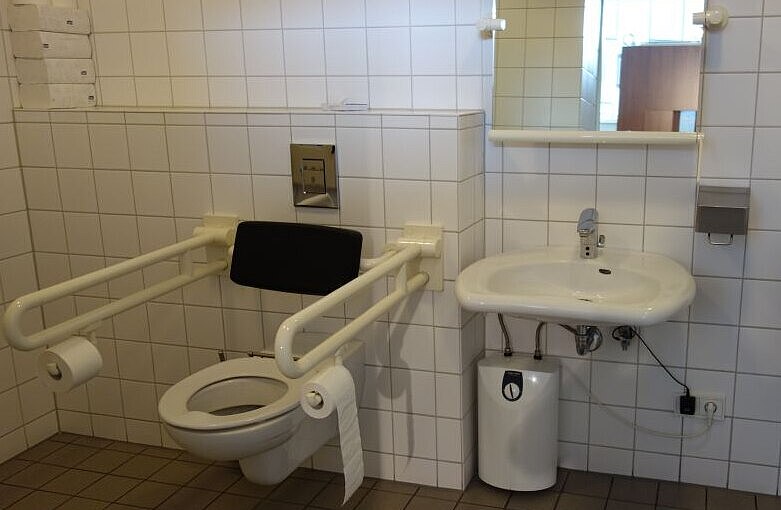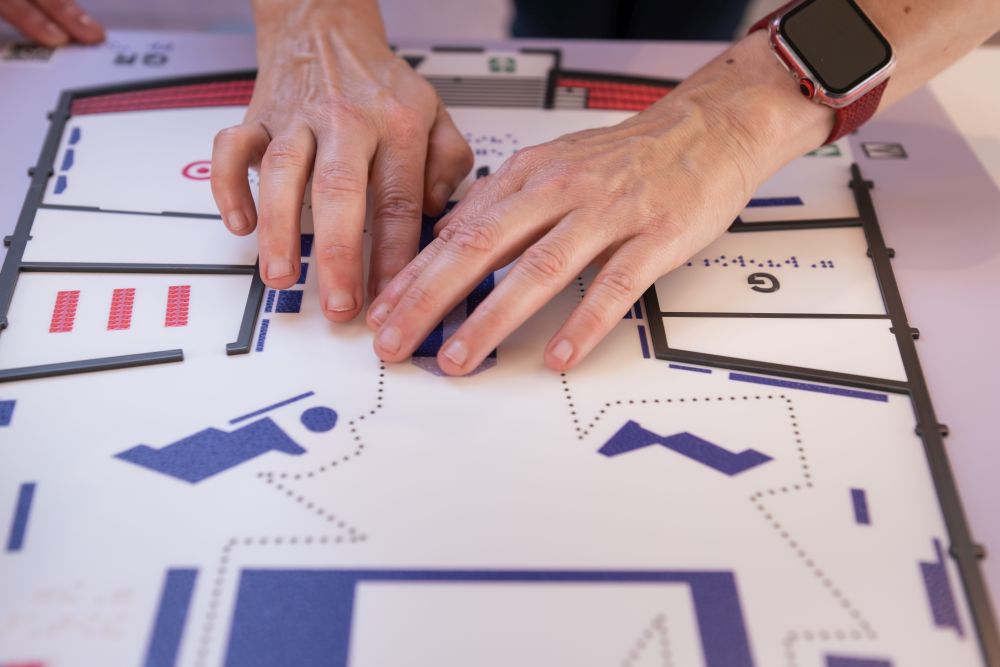Accessibility
Welcome to the Tränenpalast! On this page you’ll find all the key information on barrier-free access to the museum and our exhibitions. We aspire to make visiting our exhibition as easy and pleasant as possible for all our guests. If you wish to book a group guided visit we’d be glad to hear a little about your group in advance to make certain we get everything right to make your visit enjoyable.
Visitor Services
Mo-Fr: 9 a.m.–4 p.m.
Contact
Phone: +49 (0) 30 46 77 77 9-11
E-Mail: besucherdienst-berlin(at)hdg.de
If you are using public transport, take the city rapid railway (S-Bahn lines S 1, 2, 25, 5, 7, 75) or the underground (U-Bahn, U6) to the stop “S+U Friedrichstrasse”. The station has lifts. The Tränenpalast is located directly adjacent to the station between the riverbank and Friedrichstrasse. Using the M1 or the no. 12 tram, again get off at the “Friedrichstrasse” stop for the Tränenpalast. There are no steps to get on or off the tram. The museum is about 300 metres from the tram stop.
Further information:
BVG
S-Bahn Berlin
Guide dogs and canes are allowed in the museum and in the exhibitions.
Our exhibition has a tactile overview map, a tactile floor guidance system is not available.
There is an Audioguide with German audio description.
There are selected tactile objects in the Palace of Tears. You can obtain a corresponding list and white gloves at the information desk.
For our group guided visits we use a guidance system for which there are suitable inductive neck loops available. If you would like to use one during a group guided visit, simply tell one of the staff members at the Information Desk or inform the guide.
Neck loops are suitable for hearing aids with a T-coil. In order for your hearing aid to receive the sound from our guidance system, set the "T" or "MT" position on your hearing aid at the beginning of the event. With digital hearing systems and cochlear implants (CI), the hearing aid is switched using buttons or a remote control. Your hearing care professional will be happy to help you and explain the functions and settings of your hearing aid or CI. You then simply wear the induction loop around your neck and connect it directly to the pocket receiver. Please ask our speakers about the system on site.
There is an Audioguide in German Sign Language with seventeen stations.


